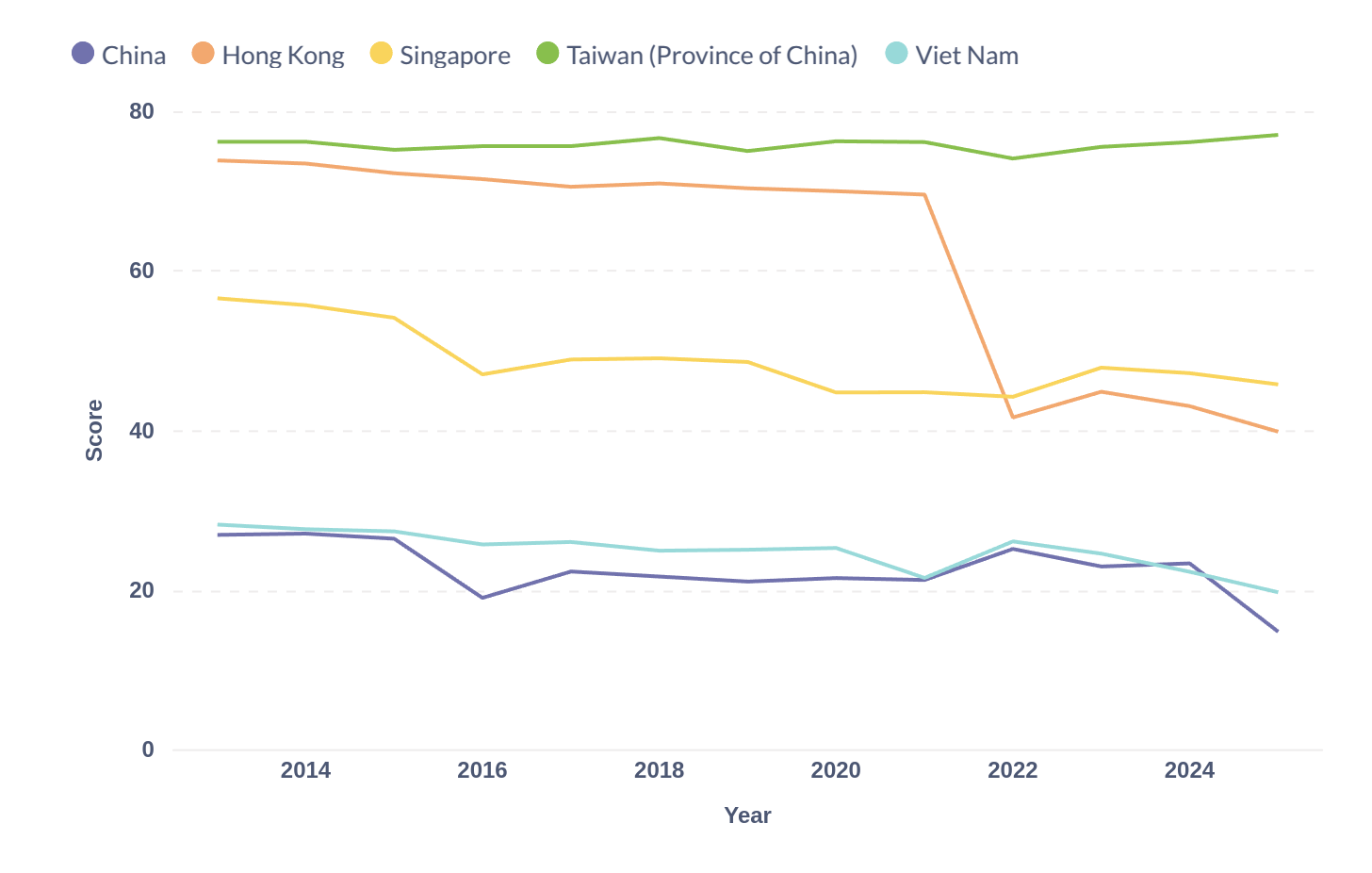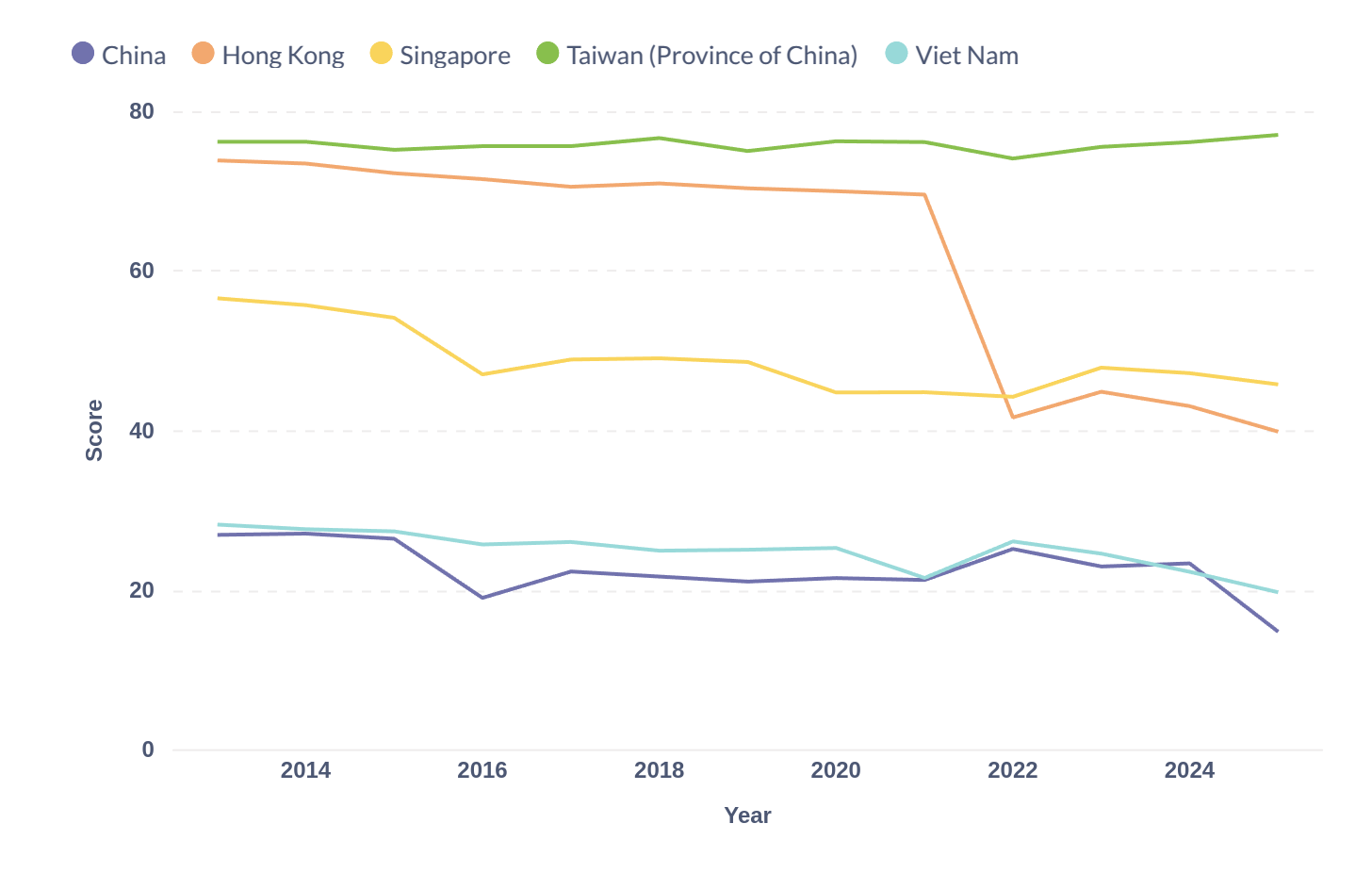The Decline and Divergence of Press Freedom in East Asia (2013–2025)

Data sourced from Reporters Without Borders via RSFIndex dataset

Press freedom is a powerful indicator of a society’s openness, safety, and democracy. The graph above offers a decade-long perspective on press freedom scores in China, Hong Kong, Singapore, Taiwan, and Vietnam, using data scraped from the Reporters Without Borders World Press Freedom Index – an invaluable, freely available dataset collected by Renavon to show the power and ease of using public data. Let's explore the trends and their significance.
Key Trends in the Data
1. Taiwan: A Regional Leader
Taiwan remains the clear leader in press freedom throughout the decade, with scores consistently around or above 75. This steadfast performance underscores Taiwan’s robust legal protections for journalists and its culture of openness and civic participation.
2. Hong Kong: A Dramatic Downturn
Once nearly level with Taiwan, Hong Kong’s press freedom saw a catastrophic decline after 2020. The drop – from well above 70 to below 45 by 2022 – tracks with the imposition of the National Security Law and subsequent government crackdowns on independent media and dissent. This sharp decline illustrates how quickly even a previously free press environment can deteriorate under political pressure.
3. Singapore: Low but Stable
Singapore's score hovered in the mid-50s in 2013, sliding slowly downward to the low 40s by 2025. While Singapore does not have the severe restrictions seen in China or Vietnam, its consistent government regulation, legal constraints, and environment of self-censorship mean freedom of the press remains relatively low.
4. China and Vietnam: Persistent Restriction
China and Vietnam have remained at the lowest tier, never rising far above 25, with scores recently dipping even lower. Both countries tightly control journalism and actively suppress dissent, as reflected in their consistently poor rankings.
5. Divergence and Convergence
Whereas Taiwan, Hong Kong, and Singapore were once fairly close in score, Hong Kong’s decline and Singapore’s slow erosion have created a stark divergence, with Taiwan now in a league of its own. Meanwhile, Vietnam and China show little change, emphasizing systemic entrenchment.
Why This Matters
- For Journalists: The environment has become notably riskier in Hong Kong, while Taiwan remains relatively safe.
- For Citizens: The ability to access independent, uncensored news is increasingly limited in much of the region, except for Taiwan.
- For Policymakers and Watchers: These trends are a bellwether of deeper political trajectories-toward either more openness or more authoritarian control.
About the Data
All scores in the graph are drawn from the official Reporters Without Borders World Press Freedom Index, a trusted source for comparative press freedom data worldwide. The full dataset (including data for 180 countries and annual updates) is available for free at renavon.com/data/pdm/rsfindex. This resource is ideal for journalists, researchers, students, and anyone interested in the fate of global media freedom.
Interested in exploring more? Download the dataset and try your own visualizations or analysis at https://renavon.com/data/pdm/rsfindex.
⁂

